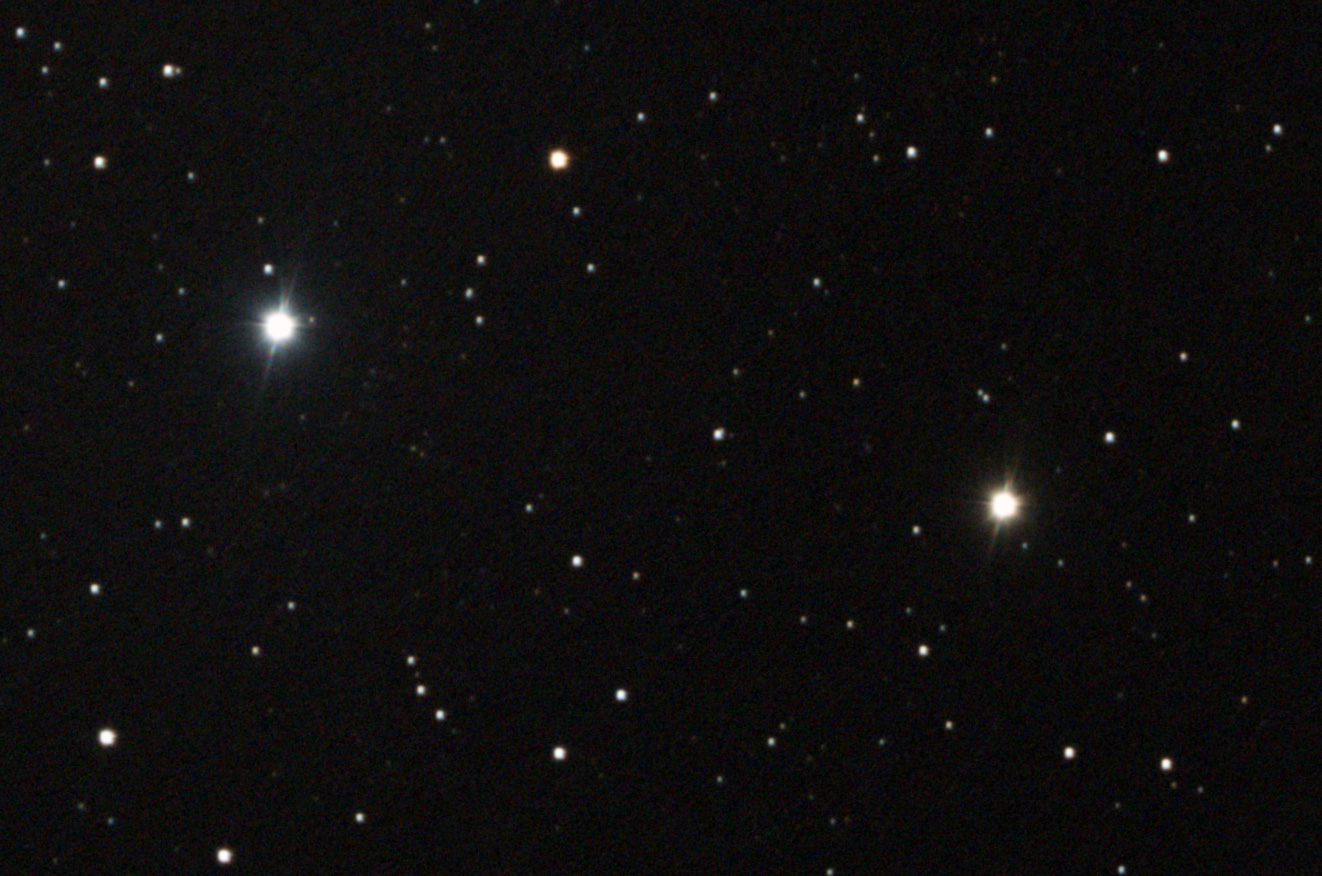
M40 double star (Winnecke 4)
Apparent Magnitude: 7.1
Distance Aprox: 4,000 light-years
Constellation: Ursa Major
Star Count: 2
M40 is one of the few Messier objects that are not deep sky objects, but were catalogued by mistake. M40 was discovered by Charles Messier on October 24, 1764. Messier was looking for a nebula reported in the area by the Polish astronomer Johannes Hevelius in the 17th century, but did not find one, so he catalogued the double star instead. The “nebula” reported by Hevelius may have been the 12th magnitude barred spiral/early type ring galaxy NGC 4290, which may have been visible in large telescopes at the time, but not in those Messier used. Messier was aware that the object he catalogued was a double star and not a nebula, but included it on his list nonetheless.
Messier 40 is easy to find as it lies right next to Megrez (the star that connects the handle of the Big Dipper to the cup). Messier 40 is composed of a G0-type star and an F8-type star with apparent magnitudes of 9.65 and 10.10. The stars are separated by 52.8 arc seconds and form an optical pair, lying along the same line of sight, but not physically connected to each other as they are known to be at different distances from Earth. The brighter component (G0) is designated as HD 238107 and the fainter (F8), HD 238108. The more distant component lies more than 1,900 light years away.
Taken 7/7/18 in Grand Rapids, Ohio by Russell Kille on a CPC 1100 with Hyperstar @ F2 and ZWO ASI294MC Pro camera
